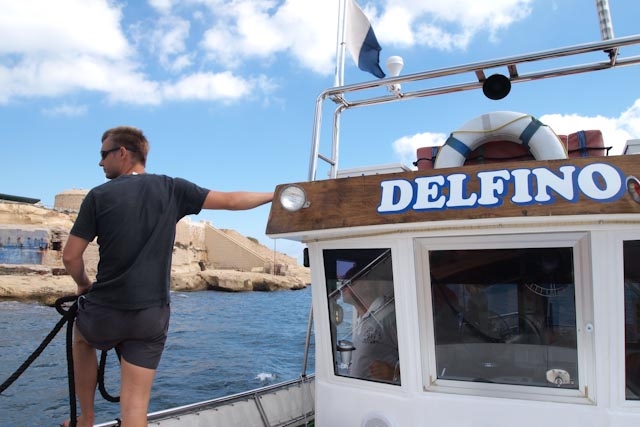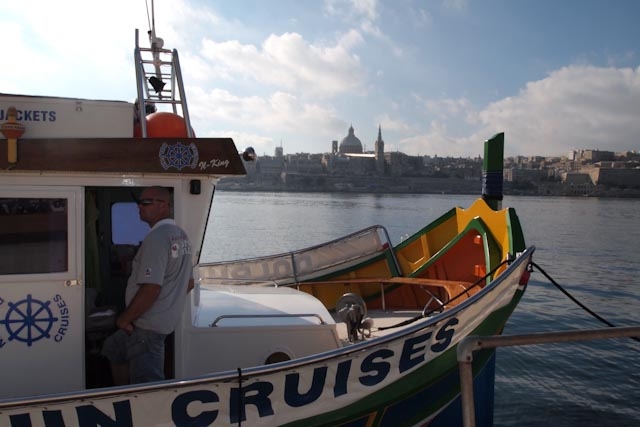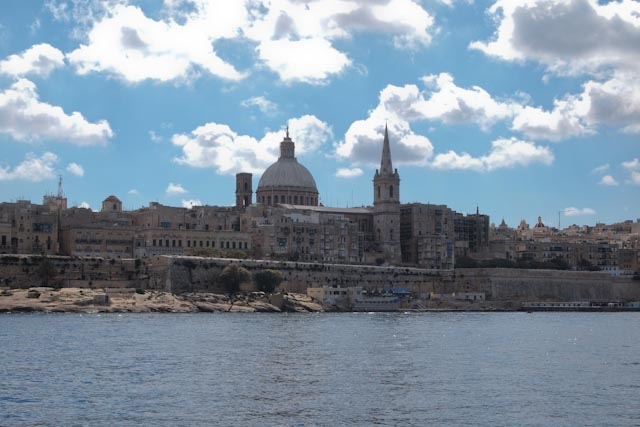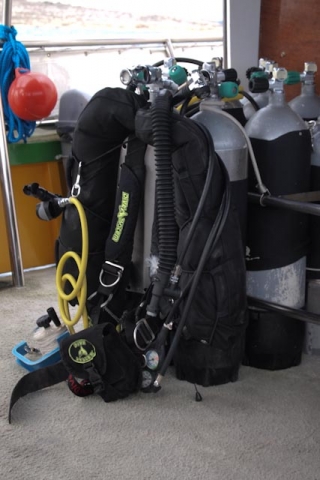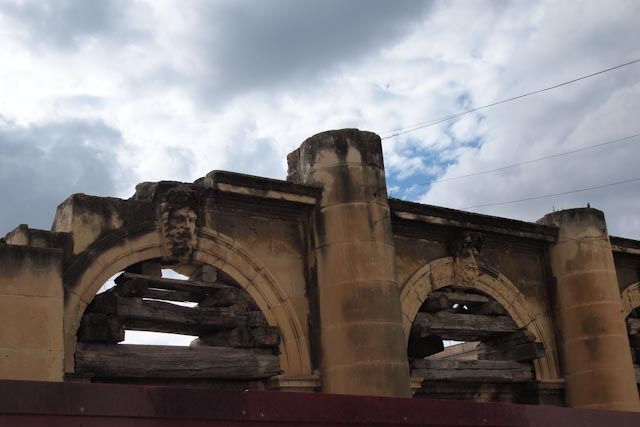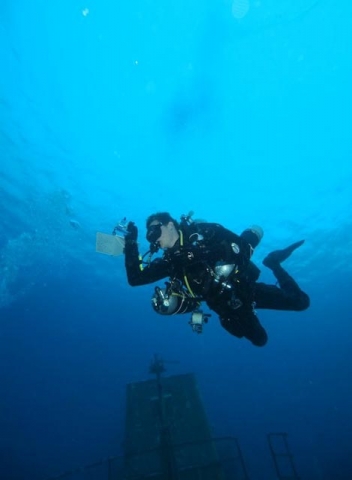I’m sitting aboard the Delfino, a traditional Maltese fishing boat converted into a dive vessel, Jace the captain calls out to cast off the mooring lines and we lazily drift away from the dock. Moving along slowly we pass by the high walls of the city of Valletta, the impressive skyline dwarfs our tiny boat as we head out to the open Mediterranean.
Thomas, a Divemaster at Selkies Oxygene Malta. Aboard the Delfino
Jace on the Delfino
The city of Valletta
We’re setting out toward the HMS Stubborn, an S-class submarine of the British Royal Navy, sunk off the coast of Malta in 1946 having survived the Second World War. The ship lies in 56m of water beyond the recreational dive limit of 40m. My dive instructor Karl and fellow technical diver Ian don their twin sets and slings, jumping into the water and descend down to the wreck. Splashing in, I descend down to 40m and hang mid water, the shadow of the 66m long submarine sprawls out below me.
This was the beginning of my Maltese diving trip and fuelled my want to complete my introduction to technical diving more than ever.
The hosts for my stay were Karl and Pamela Allmark of Selkies Oxygene Malta. Karl and Pam hosted Filip Wolski the 2009 European Scholar for technical diver training. He liked it so much that he returned post scholarship to continue further training and work at the dive store. Karl and Pam are strong supporters of the scholarship and happily offer diver training to any current scholar interested. Karl jokes that they at Selkies Oxygene Malta are the patron saint of wayward strafes and reprobates; the finest motto of a diving operation I’ve ever heard. I was lucky enough to have one on one tuition with Karl throughout my course, which was amazing when one it witness to his workload! Pamela is no exception to this, they both work incredibly hard every day of the week, providing a personable enjoyable diving experience to all their divers.
Karl took me through my DSAT Tec Deep and Trimix Gas Blender courses during my two weeks with them, the initial days of visit had me familiarising myself with the twin sets and any other new equipment I was to use through the course. Soon enough Karl and I were dropping into the water undertaking shut down drills, cylinder staging, gas switching, and decompression stops.
My twin set
Malta has a rich and often violent history, due to its position in the Mediterranean, the tiny island country has had a long list of rulers, from the ancient Greeks, the Phoenicians, and Romans in the BC epoch, to the Fatimids, Sicilians, Knights of St. John, French, and British, and that’s not naming them all! My Dad, upon finding out I was heading to Malta gave me a book called ‘The Great Siege’ an amazing historical tail of the successful defense of Malta by the Knights of St. John against the undefeated Ottoman Empire in 1565. Reading up on some of the history of the island prior to visiting made the experience that much more interesting. During WWII the city of Valletta was the most bombed city in the entire war, with evidence of this still remaining throughout the ancient city.
The bombed remains of a building in the heart of Valletta
Through all the destruction of WWII a silver lining can be found, Malta is now host to one of the largest number of WWII wrecks anywhere in the World. The diversity is amazing, in one day we dove a British submarine, a fighter plane, and a British destroyer (called the HMS Maori!!!) complete with intact bombs still resting inside. Let me tell you, it’s hard to get tired of a training course when you’re undertaking drills hovering above one of dozens of historical WWII wrecks!
Undertaking drills
Karl and I also went out searching for new wrecks. It was great to be part of a hunt for a piece of history, I found myself getting really into it. Just the year before Karl had found a spitfire (a British single seat fighter aircraft used throughout WWII) and we were hoping to strike it lucky again. While the rough areas of our potential discoveries were known we had a huge area in which to search and all the supposed wrecks lay at around 45m! These weren’t shallow search dives by any means. We would spend 20 minutes on the bottom using air (or for our last dive TMx20/25) and undertake accelerated decompression using EAN50 and EAN80.
Unfortunately Karl and I didn’t find the wrecks we were looking for this time, but we did stumble across an unexploded bomb! This wasn’t a small bomb either, it looked to measure about 1.5m in length and roughly 60cm wide from as close as I dared to get to it! It was extremely exciting seeing it there covered in algae, untouched and potentially unseen since it was dropped out of a plane during WWII.
My stay with Karl, Pam, and the whole team (Borris, Thomas, Laurie) at Selkie Oxygene Malta flew by far too quickly. I hope to return soon! I loved my introduction to technical diving and hope to continue on with more in the future. Diving the wrecks gave me a new found appreciation for the historical aspect associated with sunken treasures such as the ones lying around Malta. It’s become a new found interest and I hope to fill my days diving with many more amazing wrecks around the globe.
Images from St. Paul’s Cathedral, the streets of Valletta, more diving!, my visit with Pam to the French and English auberges (the housing for the Knights), the Maltese flag, the battlements protecting the three cities lit up at night, and a few other memorable moments from the visit. The final image is of the Selkies Oxygene Malta team. From left to right: Sanne, Borris, Thomas, myself, Ian, Laurie, and Karl

